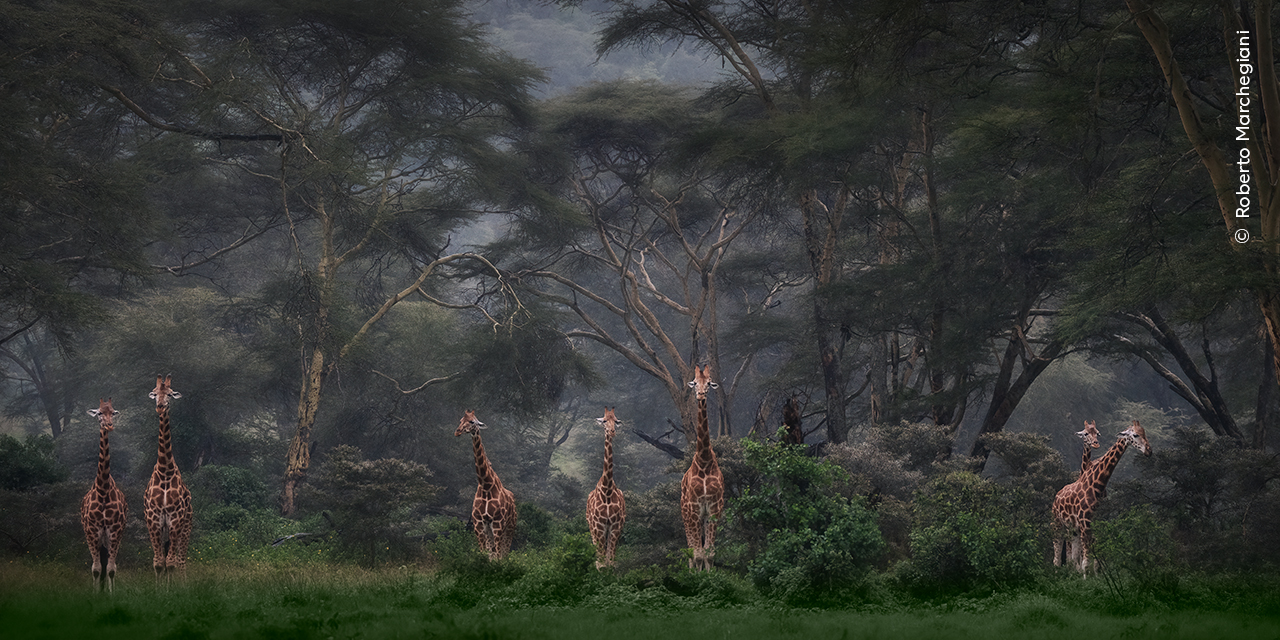Wildlife Photography: Capturing Moments of Nature as a Form of Art

The Emotional and Technical Aspects of Wildlife Photography
In a world teeming with life, wildlife photography serves as a compelling bridge between nature and art. This unique genre not only captures stunning visuals but also tells profound stories of the biosphere. Through the lens of a camera, the intricate relationship between humans and wildlife is explored, revealing a narrative that transcends mere observation. Each image is a testament to the beauty and complexity of our planet’s ecosystems.
Wildlife photographers play a pivotal role in enriching our understanding of the natural world. They showcase breathtaking moments that might otherwise go unnoticed, enabling viewers to appreciate the intricate details of animal behavior and habitat. Let’s delve deeper into some key aspects of this enthralling field:
- Patience and Timing: The perfect shot often requires long waits and keen awareness of animal behavior. Photographers can spend hours—sometimes even days—tracking a particular species, observing their daily routines and movements. A classic example is the quest to capture the elusive snow leopard in the Himalayas. With its rare appearances, wildlife photographers often find themselves in frigid conditions, poised silently with their cameras, waiting for that fleeting moment of grace.
- Natural Aesthetics: Each photograph serves to highlight the beauty and fragility of ecosystems. The vibrant colors of a male peacock fanning its tail or the stark contrast of a black bear against a snowy backdrop not only incite awe but also raise awareness about preservation. Stunning visuals can evoke emotions, prompting viewers to appreciate the natural world and contemplate their role in its conservation.
- Conservation Efforts: Many photographers advocate for wildlife preservation through their work, raising awareness about environmental issues. The powerful imagery of endangered species such as the northern white rhino serves as a rallying cry for conservation initiatives. By sharing these powerful visuals on social media platforms or in exhibitions, wildlife photographers can inspire action and encourage communities to preserve their natural habitats.
From the majestic bald eagle soaring through the sky to the intricate dance of a butterfly in a sunlit meadow, each click of the shutter encapsulates a moment in time. As technology enhances the accessibility of photography, enthusiasts in the United States now have unprecedented tools at their disposal. High-resolution cameras and mobile apps enable even amateur photographers to capture unique perspectives and share their experiences with a broader audience.
As we delve deeper into this captivating field, we invite you to explore the skills, tools, and passion that drive wildlife photographers. By understanding their processes and motivations, we can better appreciate the striking images that serve as a timeless form of art and a poignant reminder of the responsibility we bear for our planet’s future.
DISCOVER MORE: Click here to delve into the benefits of art on mental health

The Artistry of Wildlife Photography
Every so often, in the quest to express the beauty of the natural world, a wildlife photographer becomes a storyteller, capturing the wild in its most raw and unfiltered forms. This dance between technical prowess and creative vision is what elevates wildlife photography from mere documentation to a profound form of art. With the right combination of timing, composition, and emotional connectivity to their subjects, photographers bring the wilderness to our living rooms, captivating audiences and igniting a sense of appreciation for all living things.
Among the numerous skills essential to wildlife photography, a deep understanding of animal behavior is paramount. Knowing how to read the subtle hints of an animal’s movements allows photographers to anticipate moments that most observers would miss. For example, capturing the intricate details of a falcon mid-hunt requires knowledge of its habits and instincts, ensuring that the photographer is positioned at the right angle and moment. An appreciation for these natural rhythms transforms a snapshot into a meaningful narrative that taps into the viewer’s emotions.
Additionally, the technical skills required in this genre cannot be understated. Wildlife photographers must possess proficiency in various photographic techniques, including exposure, aperture settings, and shutter speed. For instance, utilizing a fast shutter speed is crucial when photographing agile creatures like cheetahs in full sprint, allowing for clarity in motion. The selection of lenses is equally important, as a telephoto lens can bring distant subjects up close, capturing intimate moments while preserving the wilderness’s undisturbed environment.
The Intersection of Equipment and Creativity
The artistic side of wildlife photography goes hand in hand with the equipment used. With the advent of technological advancements, such as high-resolution cameras and powerful lenses, even budding photographers can embark on their wildlife endeavors. This has democratized the art form, inspiring a new generation of wildlife enthusiasts across the United States. The accessibility of tools like drones and remote cameras allows for unique perspectives, revealing the intricate behaviors of animals in their habitats without human interference.
Moreover, a good wildlife photographer must master composition techniques to create visually striking images. The rule of thirds, leading lines, and framing are just a few principles that help in crafting compelling photographs. For instance, a solitary grizzly bear fishing in an icy river can be enhanced by utilizing the rule of thirds, drawing the viewer’s eye toward the action while allowing the natural surroundings to tell a larger story. Understanding these foundational elements of composition can transform an ordinary scene into a visual masterpiece.
As we continue to explore the multifaceted nature of wildlife photography, it becomes evident that it is not solely about capturing breathtaking images. It involves a deeper connection between the photographer and the natural world, fostering an emotional response in viewers, reminding them of the profound beauty and vulnerability of life on our planet. From the harmonious symphony of sounds in a forested area to the vibrant colors of a sunrise over a savanna, each photograph transports the audience into the heart of nature, highlighting the importance of preservation and respect for wildlife.
Benefits of Wildlife Photography
Wildlife photography is not just about capturing stunning images; it encompasses a profound appreciation for nature and conservation. Through the lens of a camera, photographers not only seize ephemeral moments but also illuminate the intricate balance of ecosystems. Below is a detailed table highlighting some key advantages associated with this captivating theme:
| Category | Description |
|---|---|
| Awareness | Photography serves as a medium to educate the public about wildlife conservation, raising awareness of environmental issues. |
| Artistic Expression | Creatively capturing the beauty of nature allows photographers to express their artistic vision while advocating for wildlife protection. |
Through these lenses, wildlife photographers become storytellers, sharing untold narratives that inspire action for conservation. Moreover, the aesthetic appeal of wildlife photography can stimulate greater appreciation for the natural world, leading to increased involvement in habitat preservation initiatives.
DIVE DEEPER: Click here to explore various artistic expressions
Chasing the Light: The Importance of Timing in Wildlife Photography
In the realm of wildlife photography, timing is everything. The magic hour—early dawn and late afternoon—often provides the best lighting for photographers. During these times, the sun sits low in the sky, casting a warm, golden light that enhances the textures and colors of the environment and its inhabitants. Photographers who harness this fleeting natural illumination can elevate their images, making even a simple squirrel appear majestic against the backdrop of sunlit foliage.
Furthermore, understanding seasonal changes is vital for capturing unique wildlife moments. Animals behave differently throughout the year, often influenced by mating seasons, migration patterns, and changes in food availability. For instance, early spring is a prime time for photographing migratory birds returning to North America. Wildlife photographers who study these seasonal behaviors can position themselves strategically to capture the awe of a hawk mid-migration or the delicate courtship of cranes dancing in a field.
Ethics in Wildlife Photography
As captivating as wildlife photography can be, the ethical considerations surrounding it cannot be overlooked. Photographers must prioritize the well-being of their subjects, ensuring that their presence does not disrupt natural behaviors or habitats. Techniques such as allowing ample distance from the wildlife, using long lenses, and avoiding feeding or staging animals are crucial to maintaining the integrity of the natural environment. The National Geographic Society actively promotes wildlife photography ethics, advocating for the respect of animals and their habitats in pursuit of stunning visuals.
Moreover, the emergence of ethical wildlife photography has given rise to a new movement within the field. Photographers are now more than ever using their art to advocate for conservation efforts and raise awareness of environmental issues. By documenting threatened species such as the California condor or the endangered Amur leopard, they not only capture remarkable images but also tell compelling stories that resonate with the public. This advocacy sparks conversations and inspires collective action aimed at preserving wildlife for future generations.
The Role of Post-Processing in Artistic Expression
Post-processing is yet another dimension that contributes to the artistry of wildlife photography. While the initial capture is crucial, the editing process allows photographers to realize their creative vision fully. Utilizing software such as Adobe Lightroom or Photoshop, photographers can enhance colors, adjust lighting, and fine-tune compositions to evoke specific emotions in viewers. A vibrant photograph of a flamingo against a sunset can be transformed into a breathtaking piece of art through careful sharpening and color correction, ultimately making the viewer feel as though they stand in the presence of nature itself.
However, the line between enhancement and manipulation can be delicate. Responsible wildlife photographers must navigate this territory with care, ensuring that their edits remain true to the experiences they aim to depict. The goal should never be to portray a false reality but to reveal the raw beauty that nature has to offer.
In a world where the impact of humanity on wildlife is prevalent, wildlife photography serves as a powerful tool for awareness, appreciation, and advocacy. Each image acts as a window into untamed landscapes and the creatures that inhabit them, encouraging us to reflect on our own relationship with the natural world and the steps we can take to protect it.
DON’T MISS OUT: Click here to discover delicious ethnic recipes
Conclusion: The Art and Responsibility of Wildlife Photography
In summary, wildlife photography goes beyond mere documentation; it captures the essence of nature, transforming fleeting moments into powerful art that speaks to the viewer. From the delicate balance of light and timing to the ethical responsibilities photographers hold, each aspect contributes to the overall impact of their work. The artistry involved in this practice is not just about creating visually stunning images but also about conveying profound narratives that highlight the beauty and vulnerability of the natural world.
As photographers use their lenses to advocate for conservation and awareness, they simultaneously inspire a deeper connection between audiences and wildlife. For example, striking images of iconic American wildlife, such as the majestic bison in Yellowstone National Park or the vibrant blue jays that grace our backyards, serve as reminders of what is at stake in our environment. By exhibiting these breathtaking moments, wildlife photographers invite individuals to explore their own roles in the stewardship of nature.
The integration of post-processing techniques further allows photographers to realize their artistic vision while staying true to the reality of wildlife experiences. Striking the right balance between enhancement and authenticity is key to effectively communicating the beauty and fragility of wildlife.
Ultimately, wildlife photography serves as a reflective mirror of our relationship with the natural world, urging us to appreciate, respect, and protect what remains. As you immerse yourself in this breathtaking form of art, consider how you can contribute to the preservation of wildlife and the habitats they call home, as each click of the shutter not only captures a moment but fosters compassion for the living tapestry that surrounds us.


